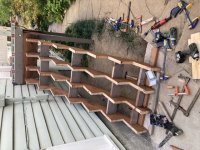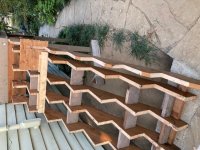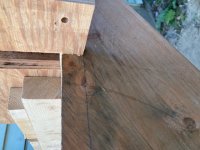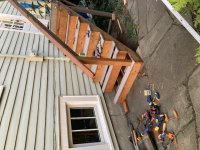Bought my stringer and riser material a week ago.
I have the material stored with the boards separated by stickers.
The 2x12 material started out at 11 3/16" and now measures 11 1/8". If I cut the tread / riser notches now and the wood shrinks further, the stinger cuts will deviate from straight, square, and plumb, and also it would mess with the miter joints where the risers meet the end stringer.
I guess the ideal would be to let the boards season for weeks or months, but that is not really practical.
I found this on the Fine Homebuilding web site How to avoid sloped stringers on deck stairs but I don't have the experience to estimate how much more the wood might shrink
Any other suggestions would be greatly appreciated.
I have the material stored with the boards separated by stickers.
The 2x12 material started out at 11 3/16" and now measures 11 1/8". If I cut the tread / riser notches now and the wood shrinks further, the stinger cuts will deviate from straight, square, and plumb, and also it would mess with the miter joints where the risers meet the end stringer.
I guess the ideal would be to let the boards season for weeks or months, but that is not really practical.
I found this on the Fine Homebuilding web site How to avoid sloped stringers on deck stairs but I don't have the experience to estimate how much more the wood might shrink
Any other suggestions would be greatly appreciated.






